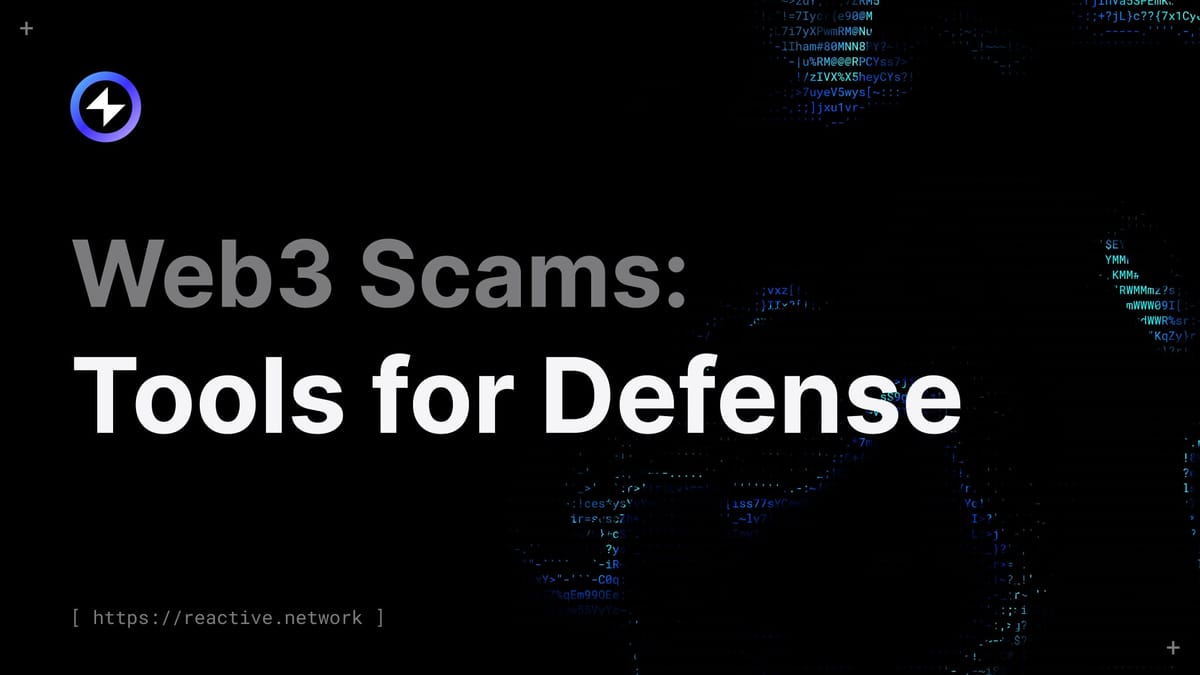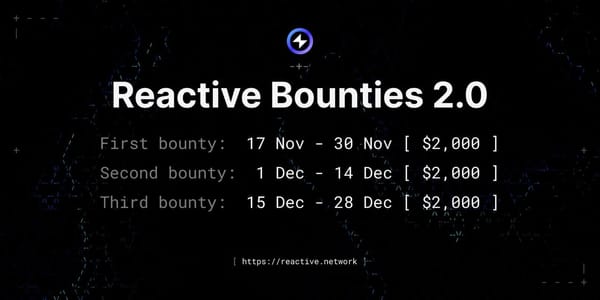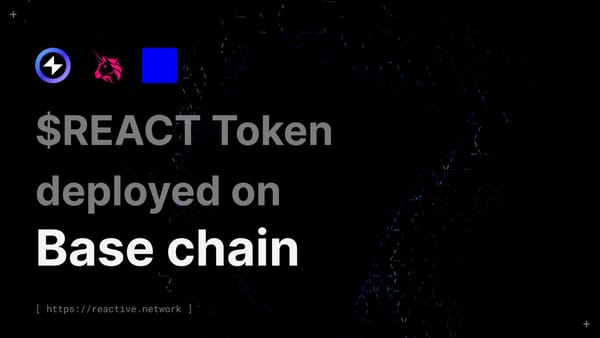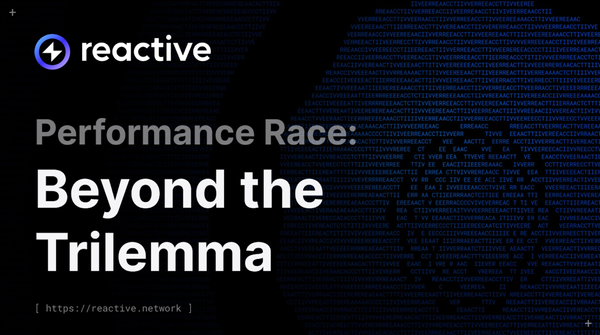Web3 Scams: Tools for Defense

When people hear “smart contract,” they often assume “safe” or “self-enforcing.” In reality, a smart contract is simply a program on the blockchain that does exactly what it’s coded to do, whether or not that’s in your best interest.
If you approve a scam contract to access your tokens, it will take them. If you sign a malicious transaction, it will drain your wallet. There’s no undo button. No fraud team. No built-in safety net.
This reality is reflected in the numbers: in 2024, crypto scams were responsible for more losses than any other form of crypto crime. Chainalysis estimates that $9.9 billion was stolen through scams alone, more than hacks and ransomware combined. That number may grow to $12.4 billion as more fraudulent addresses are uncovered.
In other words, scams aren't rare, they’re the main threat in crypto today.
Whether it's a fake token sale, a malicious smart contract, or a forged DApp interface, most scams rely on user trust and quick action. The good news is: with the right tools, you can spot many of these tricks before they cost you anything.
Reading Transactions
Even if you’re not a developer, you can still inspect what you're being asked to approve. Wallets like MetaMask, Rabby, and Coinbase Wallet will often show you what kind of action is being requested, such as:
- “This site wants to connect to your wallet.”
- “You are granting permission to spend X Token.”
- “You are signing a message.”
When the wallet doesn’t provide enough information, you can copy the transaction link and open it in a block explorer like Etherscan. There, you can see:
- The contract address
- The function being called (e.g., `approve()`, `swap()`, or `setApprovalForAll()`)
- The value of any tokens involved
- Previous transactions to and from that contract
Even without coding skills, looking at the history of a contract can help you decide whether it’s safe. If hundreds of people are interacting with it successfully, that’s usually a good sign. If it’s brand new, anonymous, or has strange behavior, stay cautious.
Monitoring and Revoking Permissions
Once you connect a wallet to a DApp or sign a token approval, that permission stays active until you manually revoke it. If the DApp becomes malicious later, it can use the permission you gave earlier.
Revoke.cash
Revoke.cash lets you view all the contracts you've approved and remove access to any you no longer trust. It works with Ethereum, BNB Chain, Polygon, and most major EVM networks. Just connect your wallet and browse your approval history.
You’ll often find contracts you forgot about, including ones you no longer use. Revoking unused permissions is a simple way to reduce your risk.
Token Approval Checkers
Many block explorers offer built-in approval checkers. For Ethereum, go to Etherscan Token Approval Checker.
This shows the tokens you’ve granted access to, and the spending limits (often “unlimited”). You can revoke any token approval directly from this interface.
Smarter Approvals with Reactive
One of the biggest risks in Web3 is the “set-and-forget” approval. Most wallets default to granting unlimited access, which means a contract you trusted yesterday could drain your tokens tomorrow. Revoking approvals manually works, but it’s easy to forget, and scammers rely on that.
Reactive contracts provide a smarter model. Instead of leaving permissions open-ended, they can create temporary or conditional approvals that revoke automatically. For example, an approval could expire after one swap, a set number of blocks, or a specific time window. This makes forgotten allowances, one of the most common attack surfaces, much harder to exploit.
Reactive design also allows for programmable safety rules: checking liquidity before a swap, blocking abnormal slippage, or even pausing when suspicious activity is detected. These automated guardrails don’t eliminate scams, but they reduce the margin for error by replacing unlimited trust with controlled, self-expiring permissions.
The trade-off is convenience. Auto-revoking approvals mean more re-approvals, but the benefit is clear: a safer default. Instead of relying on users to constantly monitor and revoke permissions, Reactive can do the heavy lifting, building security into the flow of everyday transactions.
Block Explorers
A block explorer is a public search engine for blockchain data. It lets you look up wallet addresses, transactions, token balances, smart contracts, and more. Here’s what you can do with Etherscan (or BSCScan, for Binance Smart Chain):
- Check the exact tokens and NFTs held by any wallet
- Look up your own transaction history
- See what functions a contract is calling
- Check if a token contract is verified and who deployed it
- Follow the money — where it came from and where it went
If you’re ever unsure about a project, you can search its contract address on a block explorer to see if it’s active, verified, and widely used, or if it’s brand new, inactive, or has suspicious outflows.
Verifying Projects
Scammers rely on information overload and false legitimacy. That’s why it’s critical to verify every project before interacting with it. Check whether the project is listed on trusted platforms like DeFiLlama, CoinGecko, or DappRadar.
You can also check if a smart contract has been audited by looking for security reports on the project’s site or GitHub. If no audit is mentioned, or only vague claims are made, proceed with caution.
Finally, when in doubt, follow communities and individuals who prioritize education, not hype. Avoid jumping into projects promoted only on Telegram or Twitter with no meaningful documentation or team transparency.
DEXTools
DEXTools is a popular analytics platform for decentralized tokens. It helps identify potentially malicious tokens by providing:
DEXScore — A health rating based on liquidity, age, volume, holders, and community feedback. Low scores are often red flags.
- Trading History — See if a token has consistent volume or if it’s artificially pumped.
- Honeypot/Rugpull Indicators — Flags on tokens with broken sell functions or high slippage traps.
- Liquidity Info — Shows whether liquidity is locked or can be pulled at any time.
Before interacting with any token contract, it’s a good idea to search it on DEXTools. If you see no liquidity, a new and anonymous team, or suspicious trading behavior, steer clear.
Recap
Scams in Web3 don’t all look the same. Some exploit code vulnerabilities, others manipulate tokenomics, but many rely on something much simpler: human behavior.
Social engineering scams, like pig-butchering, romance scams, and impersonation attacks, prey on trust, fear, loneliness, or greed. Even cautious and experienced users can fall victim when emotion overrides logic. These scams are psychological in nature, and no tool or checklist can guarantee protection. In these cases, awareness and emotional resilience are your best defense.
But in most other situations, the threat comes from a lack of attention or knowledge, not malicious persuasion. That’s where tools like block explorers, approval checkers, and verification platforms make a huge difference.
With Reactive contracts, safety can be built into the transaction itself. Auto-revoking approvals, programmable checks, and automated measures make it harder for scams to exploit forgotten permissions or risky trades. The trade-off is a little convenience, but the payoff is stronger defaults.
In crypto, your money moves at the speed of your signature, so if you’ve got time to confirm a transaction, you’ve got time to verify it.
About Reactive Network
The Reactive Network, pioneered by PARSIQ, ushers in a new wave of blockchain innovation through its Reactive Smart Contracts (RSCs). These advanced contracts can autonomously execute based on specific on-chain events, eliminating the need for off-chain computation and heralding a seamless cross-chain ecosystem vital for Web3’s growth.
Central to this breakthrough is the Inversion of Control (IoC) framework, which redefines smart contracts and decentralized applications (DApps) by imbuing them with unparalleled autonomy, efficiency, and interactivity. By marrying RSCs with IoC, Reactive Network is setting the stage for a transformative blockchain era, characterized by enhanced interoperability and the robust, user-friendly foundation Web3 demands.
Website | Blog | Twitter | Telegram | Discord | Docs





